How do you guide, advise, and support your customers through their shopping journeys? Personalization in eCommerce starts with Guided Selling.
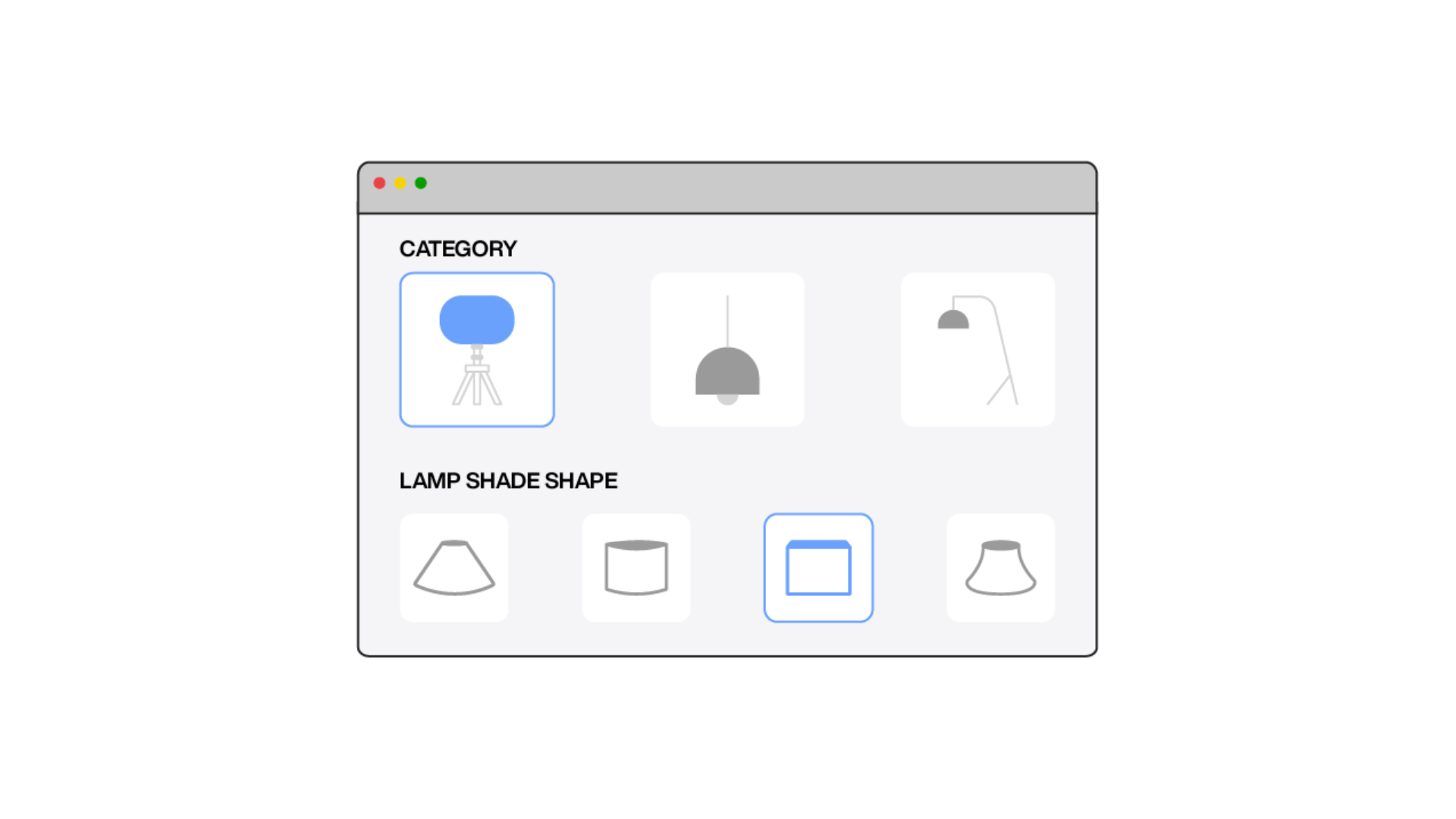
How do you guide, advise, and support your customers through their shopping journeys? Personalization in eCommerce starts with Guided Selling.
Recently, I decided to buy a new pillow because I have a stiff neck. Which has been compounded by working from home and general laziness (ok, ok maybe just the laziness).
I go online and type in, “Pillow for neck pain”. I’m shown billions of results to match my search query. Ads are pushed to the top of the page. Brands with a strong PPC or SEO game are pushed even higher. So are localized webshops. Which is great. But now I have to consider all of these choices. And we all know how paralyzing choice overload can be.
Now imagine you’re an eCommerce store selling pillows specifically for neck pain! Actually, you have the perfect pillows that could help me out. How do you make your products stand out versus the competition? How do you help me find the perfect pillow to help with my stiff neck? How do you tailor my customer experience to make my purchasing decision easier?
I’ll tell you how. The answer lies in Guided Selling.
As it is, 51% of the world’s most sophisticated organizations will employ Guided Selling in the next five years.
Now that I’ve piqued your interest, you’re probably thinking: What is Guided Selling exactly?
This article will answer this question in the most comprehensive way. Then, I’ll show you why this form of product discovery is so important to:
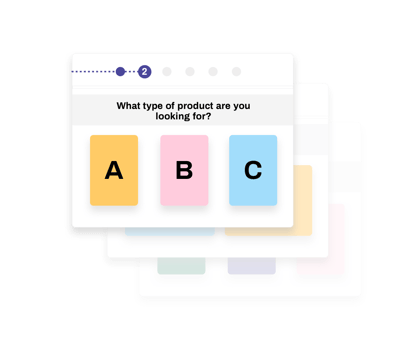
Guided selling recreates the in-store shopping experience by asking the shopper questions that identify their wants and needs. Based on these, it recommends products that are in line with the shopper’s goal.
It helps potential buyers achieve their goals and facilitates their jobs-to-be-done (JTBD) such as finding a product or making a purchasing decision as they journey through your conversion funnel.
Guided selling tools usually advise and support the user, visitor, or shopper at specific touchpoints. As a brand, guided selling helps you learn from your users’ behavior in order to optimize their experience, navigation, product discovery, and overall ease their decision-making.
In short, guided selling works twofold:
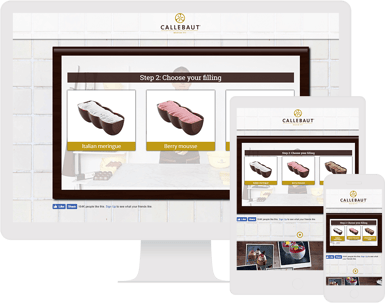
“Build a chookie” from dot
Support, personalization, and advice all fall under the Guided Selling umbrella, making it one of the fastest-growing trends and techniques for customer-centric companies.
In eCommerce, Guided Selling leverages conversational intelligence. This basically means the webshop is initiating a dialogue between the brand and the customer and then using insights from that conversation to optimize the shopping experience.
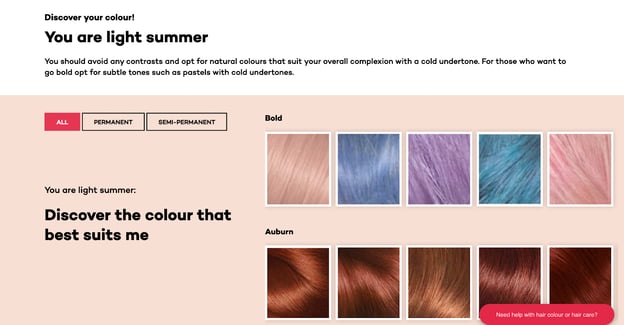
L’oreal’s Find Your Color hair quiz results.
It’s eCommerce’s answer to an in-store sales assistant, bringing similar one-on-one dialogue into the online world. Predictive search or chatbots don’t really simulate the same kind of in-store experience. Instead, Guided Selling can launch a superior product discovery experience that also feels human.
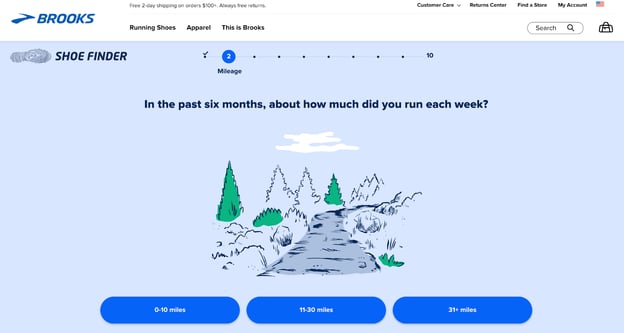
Brooks’ Shoe Finder matches shoppers with their perfect running shoe fit.
Similar to a recommender system, Guided Selling leverages data to recommend paths or steps the customer can take. Of course, this will also boost your CRO. For example, a quiz wizard - a perfect guided selling example - will help shoppers find the products they want while improving conversions.
But eCommerce today is so much more than just conversions. Guided selling leverages intelligence and data to understand how customers make purchasing decisions. It helps create a holistic picture of who those customers are as people and why they buy in the first place.
Let’s deep-dive decision-making so you have a better idea of the psychology behind Guided Selling.
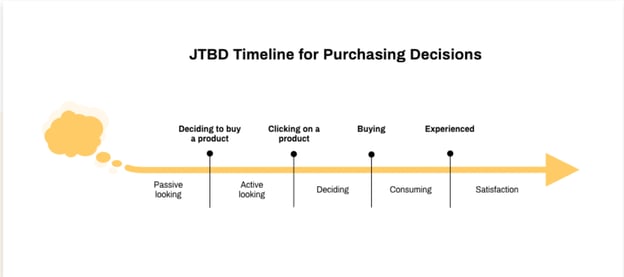
Guided selling is easily cross-vertical because it touches base with the customer's decision-making process, regardless of the product, solution, or service they’re looking for.
Whatever you’re selling, it’s important to remember that your potential customers aren’t just a sale. They are individuals who make decisions based on their jobs-to-be-done (JTBD), goals, and even mood at that moment.
For example:
I think you get the idea. We’ll talk more about buying running shoes later on.
In a market governed by customer-centricity, retailers are required to look at shoppers through their personas, demographics, behavior (consumer and psychological), and psychographics. So that they can prompt their decisions at different parts of the customer journey.
When you begin to understand and analyze a shopper’s JTBD with their decision-making journeys, you can start making the most out of your personalization. Guided selling is one of the finest examples of personalization that achieves both of these things.
Ok, so now you have an idea of how Guided Selling works to:
But for the end-customer, there are many more reasons why Guided Selling it’s so important. And at the end of the day, keeping your end-customer happy is a surefire way to boost any of those metrics of your choice.
It’s a win-win.
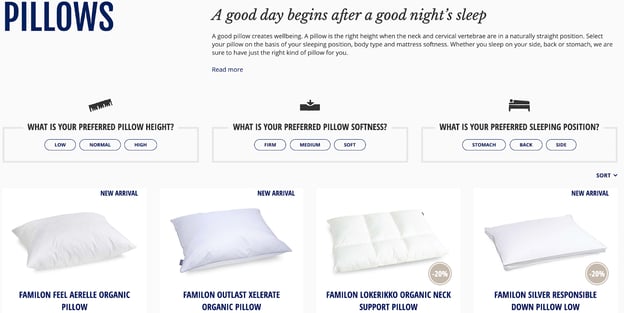
Remember my stiff neck? Once I’ve sifted through the competition and successfully landed on your webshop, your job doesn’t stop there. Especially if you’re exclusively selling pillows! How will I choose which pillow is right for me?
Familon uses Guided Selling by asking questions to the shopper and then automatically filtering products based on their answers. Collaborative filtering is also a big part of Guided Selling. By leveraging AI, you can make automatic predictions to personalize product discovery.
Filtering narrows down or filters the shopper’s choices to ones that are more in line with their original shopping goal.
Psychologically, choice overload causes a lot of decision stress and anxiety. Guided selling helps reduce these barriers by:
Aside from looking for a pillow, I also had a phase when I wanted to get into rollerblading. I know, I know, how very niche but also on-trend. I’m cool like that.
Anyway, I know nothing about rollerblades and they’re quite technical products; you need to understand buckles, durometers, wheels, etc.
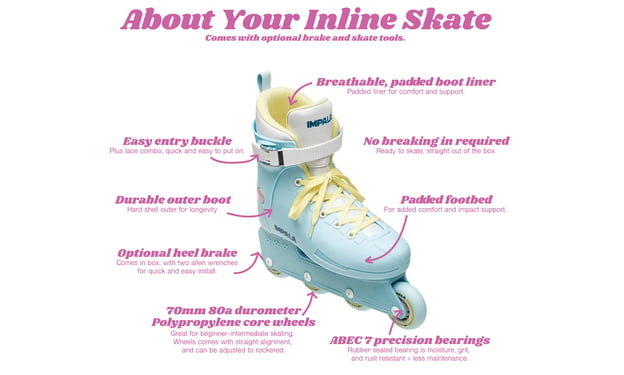
Impala Skates - the leader in this market at the moment - leverages Guided Selling to personalize their product offering based on the customer’s needs.
For technical products (and for customers who know little about them) guided selling helps to educate and advise. Think about products like phones, computers, or utilitarian products like fridges or washing machines. Each customer has many reasons to buy one product over another. And every product has a different set of attributes that make it special.
Guided selling chooses which attributes to show to which customers so you can:

Thinking of what types of products and product messaging drive behavior for whom is part of a product-driven approach. Think of your product discovery as match-making. You want to pair the perfect product to its perfect owner.
Product-centric vs. customer-centric isn’t a one-versus-the-other scenario anymore. In the future of eCommerce, customers will expect that the products they look for are personalized to their goals.
You’re flipping product discovery on its head, beginning with your product data and working backward to your customers.
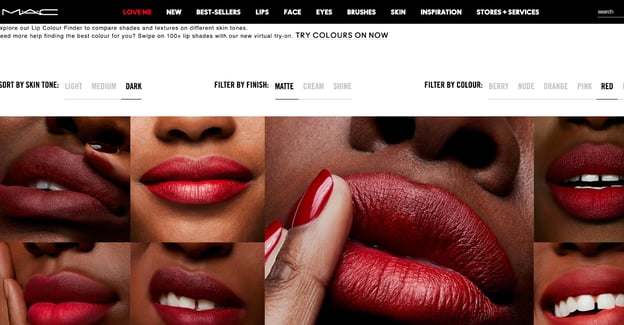
Given the rise of data protection laws, leveraging product data in this way will become key if you want to continue personalizing. Especially in the case of quiz wizards, data is leveraged in-session for retargeting, recommending, etc.
Guided Selling promotes the right product at the right time to the right customer, so you’re protecting user data while still personalizing their experience based on their input.
Take Mac’s lipstick.
They let you choose your skin tone, finish, and color (product personalization). Then, they optimize their product listing pages (PLP) with your results and product detail pages (PDP) with relevant recommendations.
When it comes to making a purchasing decision, Guided Selling will make customers feel more confident. They’ve received guidance, advice, and information, and you’re still only personalizing the product discovery experience at that moment.
So how do you get started?
Some Guided Selling examples could include things like size guides, chatbots, or personalized recommendations. But one of the best eCommerce examples that I want to show you today is a Guided Selling experience called a Product Finder.
Product Finders are basically quiz wizards that ask the right questions at the right time to match the perfect product with a customer.
Here’s how ASICS does it.
/asics-finder-01.png?width=2560&height=1208&name=asics-finder-01.png)
/asics-finder-02.png?width=2560&height=1208&name=asics-finder-02.png)
Your customers are either hedonic or utilitarian shoppers. Many are goal-oriented.
Guided Selling is about first profiling your customers so that you can offer them the right product without them having to navigate your product categories or taxonomies.
So what comes first?
Well, Guided Selling is about starting a dialogue with your customers. If you ask the right questions, not only can you show them the right product, but you can get to know them a little better and tailor your product messaging to their needs.
For a start, ASICS asks about gender. This will filter the category of search. With this information, ASICS is then able to recommend further products in the Women’s section. This is also a good way to optimize recommendations for up or cross-selling.
Crobox optimized ASICS’ recommender with “Good Match” and “Great Match” dynamic badges to further reduce choice overload.
/asics-finder-03.png?width=2560&height=1208&name=asics-finder-03.png)
But aside from recommendations, ASICS can use this information to personalize the product discovery experience on-site for women. Since ASICS is a brand that promotes products in line with the body, a gender option is very important.
But if you’re a brand offering haircare solutions, for example, your profile is based on the length or color of your hair. Or if you’re selling cat food, you could profile based on the type of cat, etc.
Understanding your audience is the first step before you can really analyze their goals and how your products fit to fulfill these.
/asics-finder-04.png?width=2560&height=1208&name=asics-finder-04.png)
As you’ll see in our ebook on decision science, customers are more than just their demographics. They shop based on their JTBD or goals at that moment.
Which means it’s important you ask the right questions based on why they’re shopping for your product in the first place (or how they’ll use it later on).
In their MVP version, the ASICS’ Shoe Finder used to only have two options:
It was only after analyzing their shopper’s behavior that they found there was a friction point because Trail Running wasn’t an option. They then added a Trail Running option based on these insights.
Since shopping goals change continuously, you also need to continuously be optimizing. Your dialogue should be interactive.
Testing your guided selling tools and then enhancing them with the right kind of behavioral data will take your personalization maturity to the next level. It’s what ASICS did, which led to incredible ROI results (revealed later on ;) ).
/asics-finder-05.png?width=2560&height=1208&name=asics-finder-05.png)
The goal of Guided Selling through a product finder is to match the shopper with the perfect shoe, right? BUT, you also want to show more information about that particular product to ease the purchasing decision.
So when it comes to recommending a product, you should show how product attributes lead to benefits for the customer. It’s this kind of value-driven communication that will really make your products stand out.
The result of the ASICS Shoe Finder shows three stand-out attributes and how they benefit the user. An even cooler approach would be to make these attributes and descriptions dynamic, based on the answers in the quiz wizard.
Again, you’re combining the worlds of product and customer-centricity so that your customers and products are like a match made in heaven.
The ASICS Shoe Finder generated an ROI of 12x and a conversion rate uplift of +18.07%. Proof that guided selling on-site will provide unprecedented results if tested and optimized. So what about in other channels?
If you can reuse your in-session data across your channels, you can begin implementing a similar guided selling strategy at crucial touchpoints.
For example, abandoned carts indicate stunted decision-making. ASICS’ retargeting email can re-share the Shoe Finder results to drive people back to their webshop. Still keeping the data in session and personalized based on product data.
ASICS also optimized their taxonomy with a Trail Running category, because through analysis of the Shoe Finder they saw people were looking for this category.
Knowing that many ASICS EMEA shoppers are looking for trail running products, they could also create campaigns based on trail running, events, blog posts, social media posts, etc.
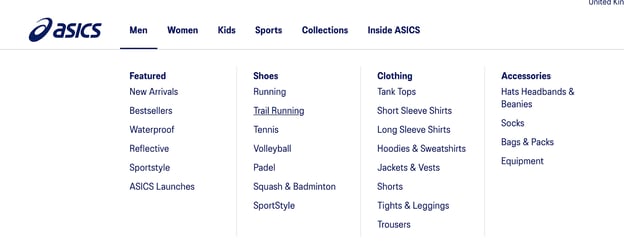
There’s so much you can do with your guided selling data because it’s such an interactive, give-and-take process. In the end, it’s a strategy that could benefit all your departments from marketing to merchandising.
Throughout this article, have you noticed how inseparable decision-making and Guided Selling are? Ultimately, we’ve seen how Guided Selling is so important in decreasing choice overload (retail’s biggest foe):
If you want to learn more about what we can do for you, learn more about our Guided Selling experiences, or book a demo with us today.